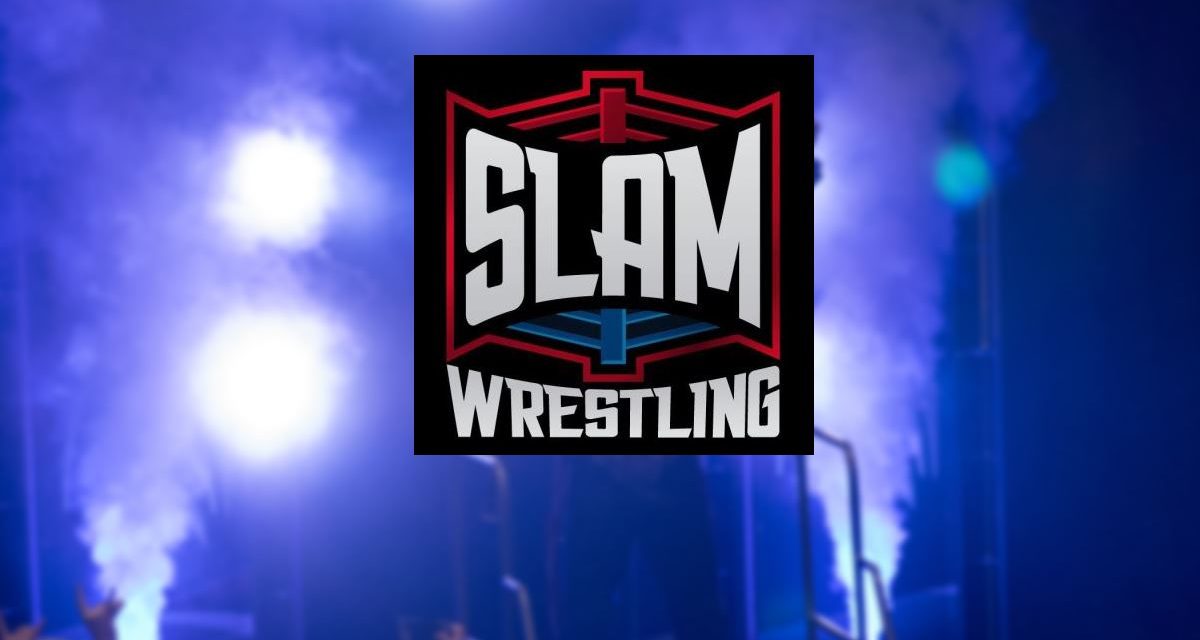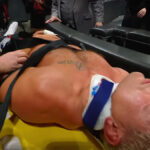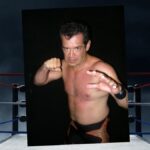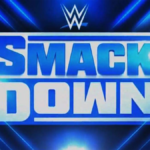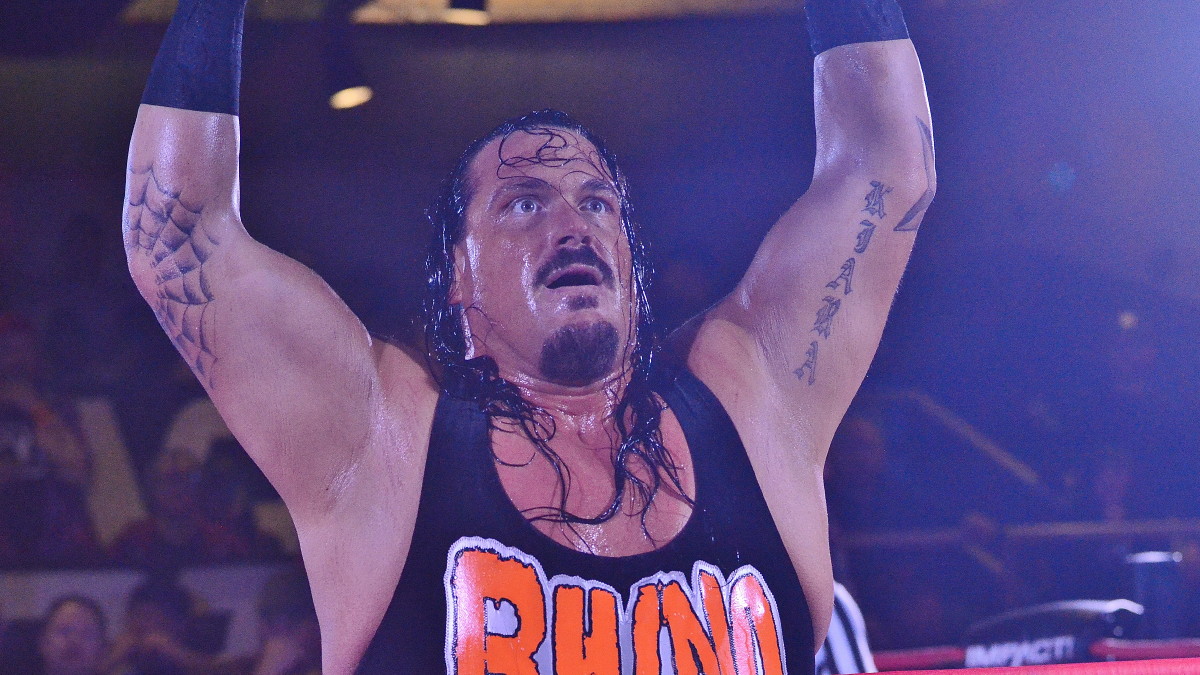Writing for SLAM! Wrestling, I’ve had the opportunity to see wrestling shows from literally every angle – at the very the top of stadium in the media box, at the ringside table, even backstage. Sitting directly beside the timekeeper’s area at last night’s WWE Network special Roadblock, I gained a new perspective, having gotten a peek at the whirlwind that is the ringside production team.
While everyone watching at home, and most of the live Toronto crowd, were focused on the in-ring action, I was fascinated by the goings-on in that little area, tucked in to the side of the commentary desk. Even though it’s depicted on TV as simply housing the bell-ringer and the ring announcer during the matches, it actually became a central hub of activity throughout the night.
At various points, there may have been eight to ten people huddled in there, doing their best to help create on-screen magic while remaining hidden to avoid actually being seen on-screen.
There appeared to be two “chiefs” in the area, one managing the visuals and props guys, and the other one managing the TV logistics. They both sat in there all night, and would direct the traffic in and out of the area, and give the team their instructions.
The TV guy (also the bell-ringer) appeared to be responsible for the flow of the show on TV. For example, he would be the one to give the lovely ring announcer JoJo (having sat pretty much beside her for the night, I can attest that she’s just as pretty in person as on TV) the nod to start her ring announcing.
The other guy I thought was more responsible for the “logistics” of the show, like managing the props team. The props guys would run in when the arena went dark between matches, and wait for their cue. Then, during the introductions, when the cameras were focused on the competitor coming down the entrance ramp, they’d scurry to the ring to do whatever it was that they had to do, and get back to the area before the lights turned back on.
For example, that purple pedestal where the New Day debuted their Booty O’s cereal was brought to the timekeeper’s area before their introduction, put in place during their introduction, and taken away during the League of Nation’s entrance, and taken away to the back only after the head production guy in that area gave the crew the go-ahead, which sent them all ducking away again until the next time they were needed.
Things like putting the tag ropes on and taking them off before singles matches where they’re not needed, instead of leaving them there all night. Things like changing the ring mat cover when it gets dirty. Those things aren’t necessarily something you think about when watching the show — indeed, they may seem to be such inconsequential elements to the whole event that you might not even notice. But without those elements — and the worker bees that execute them — what a different look and feel the show would have.
Anyone who’s watched independent shows — heck, even some of the major companies — has seen matches where the ring is surrounded by photographers and camera people. It looks cheap, distracts from the action, and basically hurts the viewing experience. Watching the choreography of the teams at Roadblock was not unlike watching a good match in some ways. The still photographer would basically “shadow” the video camera person, standing right beside them or slightly behind them, to ensure they didn’t inadvertently get in the shot. During introductions, the ringside crews would run to the ringside barrier and duck, so they didn’t get picked up by the hard camera or other roving camera that was following the entrants down the ramp. Normally I wouldn’t have paid attention to this kind of thing, but with a good buddy of mine shooting the show as an official WWE photographer this time, I made sure to notice what was going on. And the look on his face, exhausted at times and deadly serious (probably listening intently to the chatter on his WWE-issued headset), was unmistakable. As it was on the rest of the crew.
But that doesn’t mean they looked unhappy. Though the sense of “business first” was never in question, they did seem to have fun in their own way. For example, there was one “game” where the logistics team lead would try to screw with the props guys by fiddling with the dials on their audio-packs when they were crouched down in front of him waiting for their cue. Later, the team members took turns trying to grab and untie one of the others’ “man-bun,” and when he turned around, they’d blame it on someone else. It was just one of those stupid games you play on the job, just like you’d do in an office or a construction site.
What’s more is that they really seemed to appreciate the fans. They would beam when the crowd was into the matches, singing along with us during the “Ole” song during Sami Zayn’s match, “conducting” the crowd with their fingers during the dueling chants for Dean Ambrose and Triple H, and even fist-bumping each other when the crowd counted out Brock Lesnar’s suplexes.
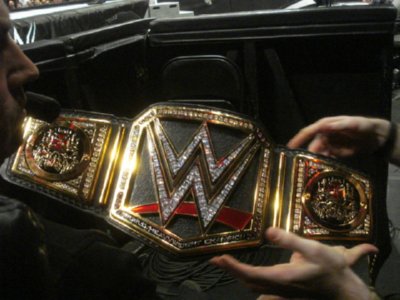 |
|
The WWE World title, as seen from my seat.
|
And when the production lead noticed I was trying to get a good close-up picture of the WWE World Heavyweight Championship, he stopped what he was doing to hold the belt up for me, waiting for me to let him know that I’d got the shot before putting it down. It was a simple gesture, but in that moment, I got a sense of why those folks do what they do. Why they travel 300 days a year and work so hard night after night, toiling behind the scenes without any glitz, glamour, or fame. Because they know that they’re part of the overall experience. And they’re going to do what it takes so that every member of the WWE Universe can say the experience was a fun one.
- Bob Kapur is pretty sure that JoJo is in love with him. He invites her to e-mail him at bobkapur@hotmail.com
